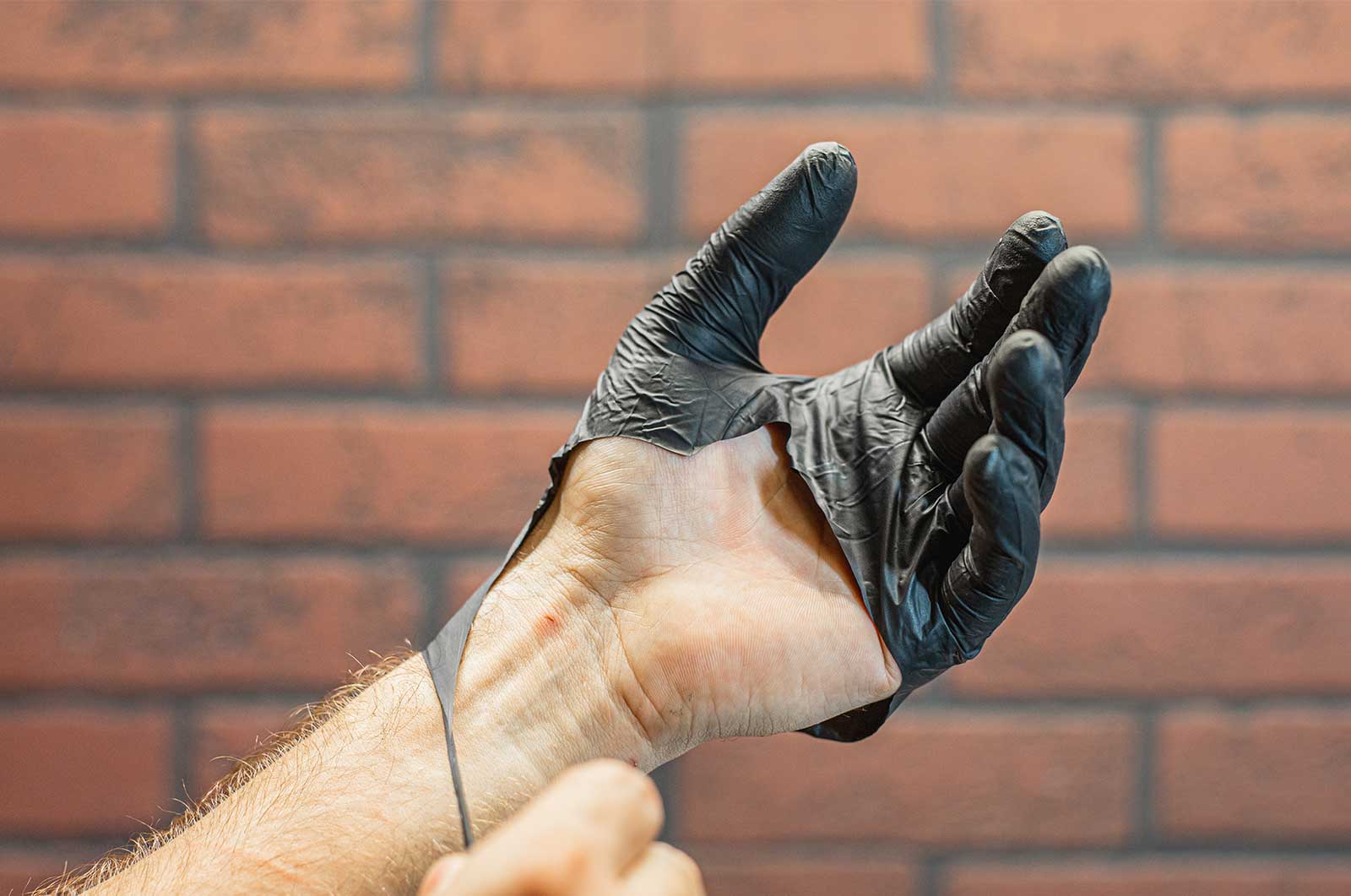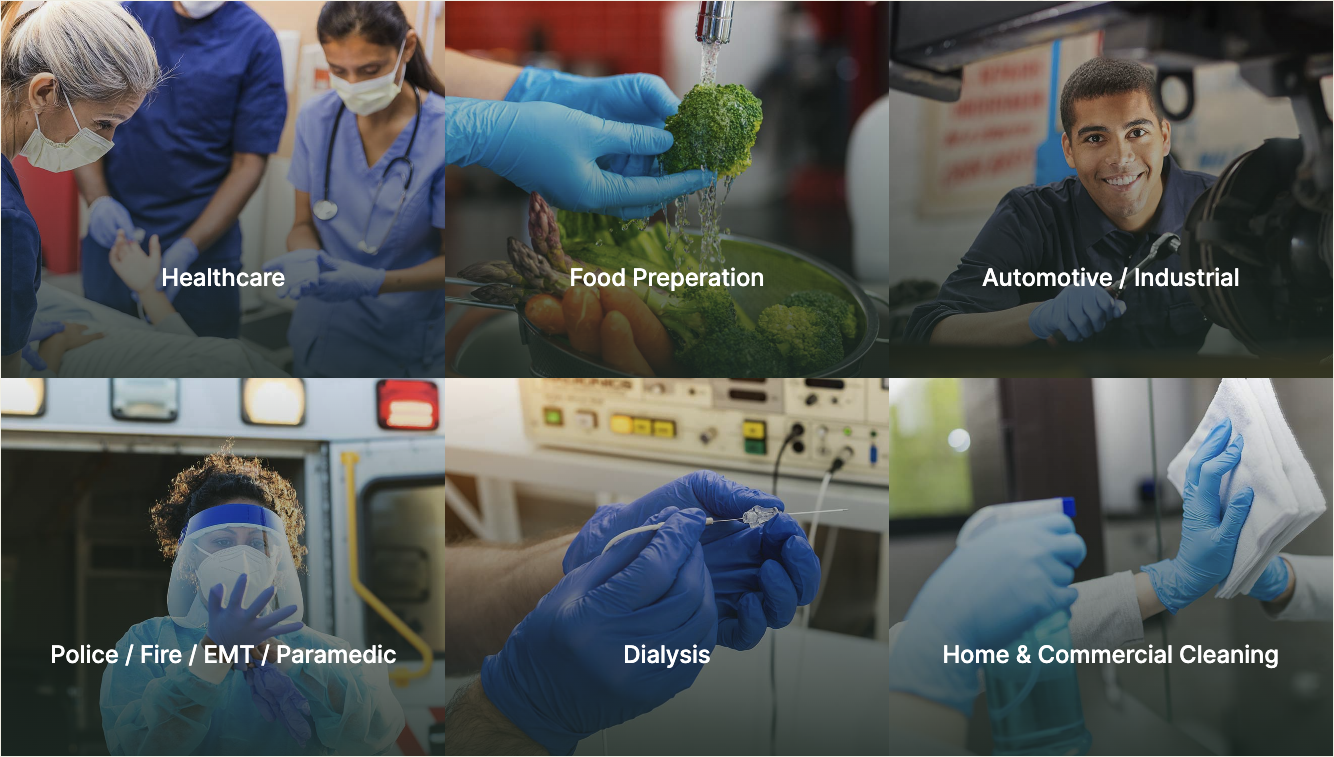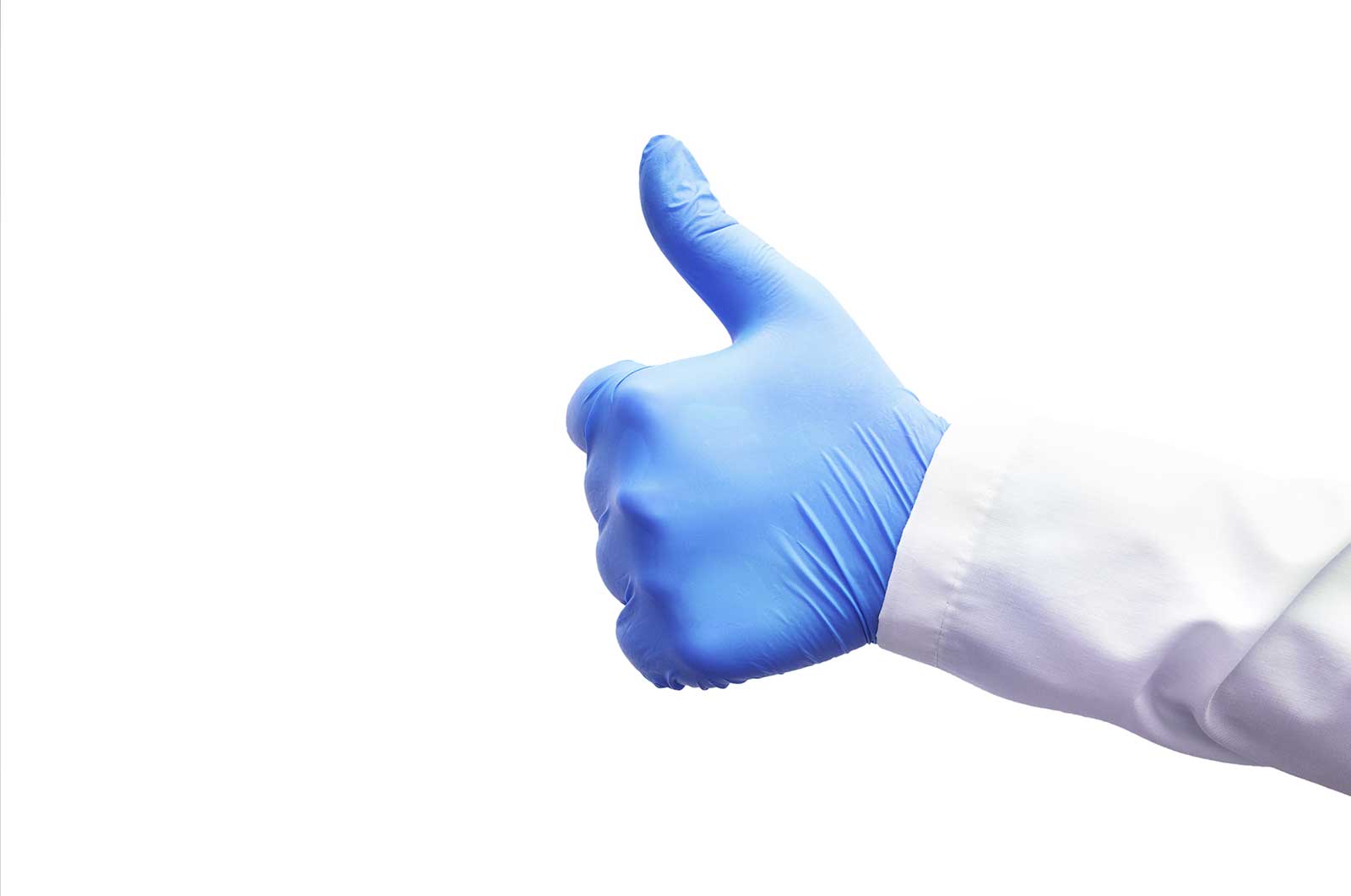Maximizing Reliability: Techniques to reduce exam glove breakage
Exam gloves are an essential part of medical care, providing a barrier between healthcare workers and patients to prevent the spread of infection. However, exam gloves can break, leading to potential exposure to blood-borne pathogens. There are a number of techniques that can be used to reduce exam glove breakage.

Picture of a torn glove
Tips to help reduce disposable glove breakage
- Choose the right glove for the job. Different types of exam gloves are made from different materials and have different properties. For example, nitrile gloves are more durable than latex gloves, but they may not be as comfortable to wear. Choose a glove that is appropriate for the task at hand and that will provide the necessary protection.
- Inspect gloves before use. Before putting on exam gloves, inspect them for any tears or holes. Even small defects can compromise the integrity of the glove and increase the risk of breakage.
- Put on gloves carefully. When putting on exam gloves, avoid stretching or pulling on the material. This can weaken the glove and make it more likely to tear. Instead, gently roll the glove down onto your hand.
- Moisturize your hands. Dry hands can make it difficult to put on and take off exam gloves, and they can also increase friction between the glove and your skin. This can lead to the glove tearing or puncturing. Moisturize your hands regularly to keep the skin soft and supple.
- Change gloves frequently. Exam gloves should be changed frequently, especially if you are working with blood or bodily fluids. Even if the gloves do not appear to be damaged, they can harbor microorganisms that can cause infection.
- Use double gloves. If you are working with high-risk patients or performing procedures that are particularly hazardous, consider using double gloves. This will provide an extra layer of protection and reduce the risk of exposure to contaminants.
- Store gloves properly. When not in use, store exam gloves in a cool, dry place away from direct sunlight. This will help to preserve the integrity of the material and prevent the gloves from becoming brittle or cracked.
- Train your staff. Proper glove use is an important part of infection control. Make sure that all of your staff are trained on how to choose, inspect, put on, and take off exam gloves correctly.
- Follow policies and procedures. Your healthcare facility should have policies and procedures in place for the use of exam gloves. Make sure that you are familiar with these policies and that you are following them at all times.
By following these techniques, you can help to reduce exam glove breakage and maximize reliability. This will help to protect yourself, your patients, and your colleagues from infection.
I hope this information is helpful. Please let me know if you have any other questions.




